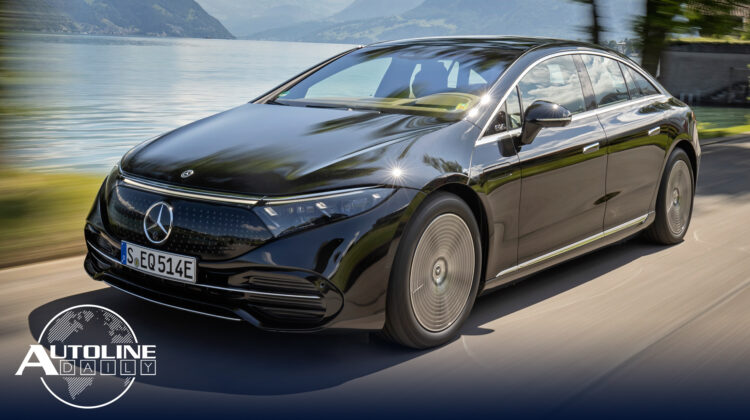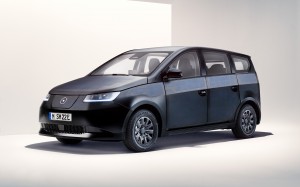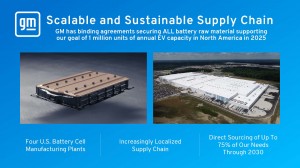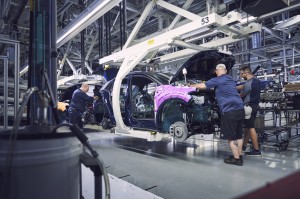
Listen to “AD #3370 – Germany Slashes EV Subsidies; Tesla Charging Fee to Use Nav; GM Q2 Earnings Down Sharply” on Spreaker.
Follow us on social media:
Runtime: 10:21
0:07 Germany Slashes EV Subsidies
0:48 Faraday Future Needs More Money
1:17 GM Q2 Earnings Down Sharply
2:42 Detroit 3 Support Chip Act
4:16 Tesla Charging Fee to Use Nav
5:06 Tesla Really Ramps Up Production in China
5:43 Tesla Posts GigaPress Video
6:14 Sono’s BEV Uses Solar Power
8:02 GM Locks Up EV Raw Materials
9:02 VW Starts Making ID.4 in the U.S.
Visit our sponsors to thank them for their support of Autoline Daily: Bridgestone, Intrepid Control Systems, MEDC and Schaeffler.
This is Autoline Daily, the show dedicated to enthusiasts of the global automotive industry.
GERMANY SLASHES EV SUBSIDIES
In the U.S., Toyota just became the latest automaker to run out of subsidies for EVs and PHEVs. And a bill in Congress to uncap the limit is going nowhere. Now, Germany is cutting subsidies for electric cars and is getting rid of them for hybrids altogether. Buyers who buy an EV that costs 40,000 euros or less currently get a 6,000-euro subsidy but that gets cut to 4,500 euros. EVs that cost up to 65,000 euros get a 3,000-euro incentive but next year that will only apply to car that cost up to 45,000 euros.
FARADAY FUTURE NEEDS MORE MONEY
EV startup Faraday Future is in trouble. It can’t go into production with its FF91 until it gets more money. It originally planned to start selling the vehicle in 2018 but had to delay it several times. The company is looking to raise another $325 million, even though last month it said it didn’t need to raise any more money to bring the FF91 to market.
GM Q2 EARNINGS DOWN SHARPLY
GM reported its second quarter financial earnings and the results are mixed. It sold 1.4 million vehicles worldwide, down 19% from a year ago. Even so, it boosted revenue by 4.6% to $35.7 billion. But the higher cost of raw materials and other factors ate into that revenue, and only $1.6 billion of it dropped to the bottom line. That’s 40% lower than last year. The other factors that dragged down profits included a loss on its China operations. Last year GM’s Chinese automotive partners delivered a tidy profit, this quarter they didn’t deliver anything. Also, GM has 90,000 vehicles in inventory in the U.S. that were built but can’t be delivered to customers because they’re missing chips. GM should be able to deliver those vehicles in the 3rd and 4th quarters, and that should add a nice pop to earnings once customers can take delivery. CEO Mary Barra says GM has modeled many different economic downturn scenarios and is ready to take action no matter which way the economy goes. She also said that by 2030 GM will earn $90 billion a year in revenue from the electric vehicles it sells.
DETROIT THREE SUPPORT CHIP ACT
Speaking of the chip shortage, Congress is expected to take a final vote this week on a $52 billion bill that will provide incentives for semiconductor manufacturing in the U.S. And the Detroit automakers are solidly supporting it. The American Automotive Policy Council, which represents GM, Ford and Stellantis, is urging Congress to pass the legislation. The group says no other supply chain shortage is having as big of an impact on the economy as the chip shortage and it says chips are “essential to a thriving, globally competitive American automotive manufacturing industry.”
TESLA CHARGING FEE TO USE NAV
Tesla is going to start charging a monthly fee for navigation. Its Standard Connectivity package, which includes things like basic apps and navigation, used to be free for the lifetime of the vehicle. But it will start charging a subscription for the service after 8 years from the first day the vehicle was delivered. Tesla did not reveal what it’s going to charge, but its Premium Connectivity package, which has more content, including live traffic, satellite maps and its vehicle monitoring system, called Sentry Mode, costs owners about $10 a month or $99 for the whole year. According to iSeeCars U.S. drivers keep their vehicle for an average of 8.6 years, so this change is most likely going to fall on the shoulders of the second owner.
TESLA REALLY RAMPS UP PRODUCTION IN CHINA
Let’s stay with Tesla for the moment. It’s greatly increasing its production capacity in China. Gasgoo reports that the EV maker is upgrading its manufacturing lines that build the Model 3 and Model Y. The changes will boost Model 3 production to an average of 1,500 to 1,800 cars a day on 3 shifts and Model Y production will reach 2,200 vehicles a day on average next month. That’s as much as 4,000 vehicles a day, which is up from an average of 2,500 before the upgrades.
TESLA POSTS GIGAPRESS VIDEO
One of the technologies that allows Tesla to make vehicles so fast is its huge casting machines. These combine dozens of stampings into one massive casting, which reduces weight, complexity and road noise, while increasing ride quality. And in this video provided by Tesla, you can see how large robots are able to slide in while the casting is still smoking hot to remove it from the mold, so it can continue on to the next phase of production.
SONO’S BEV USES SOLAR POWER
Another solar-panel-equipped car took a step closer to hitting the market. Sono Motors revealed the production design of its Sion vehicle, which it will use for validation, testing and homologation. Its body features 456 solar half-cells that help feed the Sion’s 54 kWh LFP or lithium iron phosphate battery pack. They can add up to 245 kilometers or 152 miles of range per week, but Sono says the average will be more like 112 kilometers or about 70 miles, which works out to about 10 miles or 16 kilometers a day. Even without solar, the Sion will have an estimated 305 kilometers or roughly 190 miles of range. Sono plans to sell in both Europe and the U.S. European prices are estimated to start a little over 25,000 euros. Sono is taking an asset-light approach and Finish contract manufacturer, Valmet, will build the Sion with production planned for the second half of next year.
GM LOCKS UP EV RAW MATERIALS
Earlier in the show we noted that GM’s CEO Mary Barra says they will make $90 billion a year in revenue from EVs by the end of the decade. And it’s locking up the supply chain it needs to make those BEVs. LG Chem is going to supply GM with 950,000 tons of cathode active material, which is enough to make 5 million EVs by 2030. Cathode Active Material, of CAM, accounts for 40% of the cost of a battery cell. GM and LG plan to begin sourcing that material in North America by mid decade.
GM also locked up a deal with a company called Livent to get lithium hydroxide which will also be used in battery cathodes. That contract starts in 2025, and while the lithium hydroxide is sourced from South America, the processing will be done 100% in North America over the course of the contract.
VW STARTS MAKING ID.4 IN U.S.
Volkswagen officially announced the SOP, or start of production, for the ID.4 at its U.S. assembly plant in Chattanooga, Tennessee. It plans to make 7,000 ID.4’s a month there by the 4th quarter, and VW can really use that extra production. Through the first half of this year, sales of the ID.4 in the U.S. are down 29%. VW says dealers simply cannot get their hands on the vehicles. As we have reported, VW does have inventory in the pipeline such as at ports and in marshaling yards, but those EVs are not on dealership lots. So while the numbers say it has a high days’ supply, dealers are in extremely short supply.
But that brings us to the end of today’s show. Thanks for tuning in and we’ll be right back here again tomorrow.
Thanks to our partner for embedding Autoline Daily on its website: WardsAuto.com
Seamus and Sean McElroy cover the latest news in the automotive industry for Autoline Daily.









